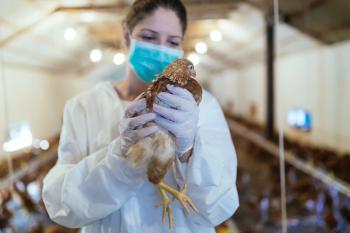
IDWeek2019 News Network: Preventing Readmissions for ABSSSI
Segment Description: Joseph Reilly, BS, PharmD, BCGP, Clinical Pharmacist, Atlanticare Regional Medical Center, discusses duration of therapy and preventing readmission for ABSSSIs.
Interview transcript: (modified slightly for readability)
When patients are admitted with skin infections, a lot of times we will give them IV vancomycin, and after a certain number of days, hopefully, it's under 4, we want to transition that patient to the outpatient setting. Now the question is, what's the best available option? We have to consider, why was the patient admitted in the first place, and many times we've learned from examining these patients that are admitted, they're often admitted and they're hemodynamically stable, providers encountered this patient in an urgent care setting or in the ED just decided that this patient is not a candidate for oral antibiotics because of compliance. So when patients stay four or five days in a hospital with a skin infection, if they're hospitalized because of it, they should probably have at least 10 days of antibiotics. What we often do with these patients, we’ll put them on oral antibiotics and discharge them, we found that our readmission rate is high, often 15%, they come back within 30 days with their skin infection, again, the same one. We also discharge patients and we give them oritavancin, a long-acting lipoglycopeptide, and send them on their way. And what we found is they don't often come back, it's actually less than 3% readmission rates. So the key really is compliance: can we ensure that these patients are going to finish their course of microbial therapy? And it's best for them to prevent disease progression, prevent readmissions that of course, are expensive for a hospital.
The readmissions are certainly a concern. And depending on your population, we've seen in studies readmission rates within 30 days anywhere from 10 to 20%. At our institution, it's 10 to 20%, just for skin infections, or something related to their skin infection. And once again, it just goes back to compliance. Who are these patients being admitted to the hospital? Why did they come to the end with their skin infection, and how can we prevent them from coming back and having a prolonged length of stay and complications associated with being hospitalized? and the long-acting lipoglycopeptides, we have utilized oritavancin in this patient population, and despite the initial acquisition cost, which will impact a pharmacy budget, what we found is that it's economically beneficial for a hospital to use these more expensive drugs initially, because they wind up saving money for the hospital in a significant fashion.
So we can prevent readmissions. Every time somebody is admitted at our institution with a skin infection, we lose somewhere about 4 to $8000 per case. So when we use oritavancin in this patient population, what we find is, it has an initial cost that's higher than standard therapies, we can get reimbursed for the drug, and we have a lower readmission rate and we have a shorter duration of hospitalization.
Newsletter
Stay ahead of emerging infectious disease threats with expert insights and breaking research. Subscribe now to get updates delivered straight to your inbox.































































































































































































































































































































